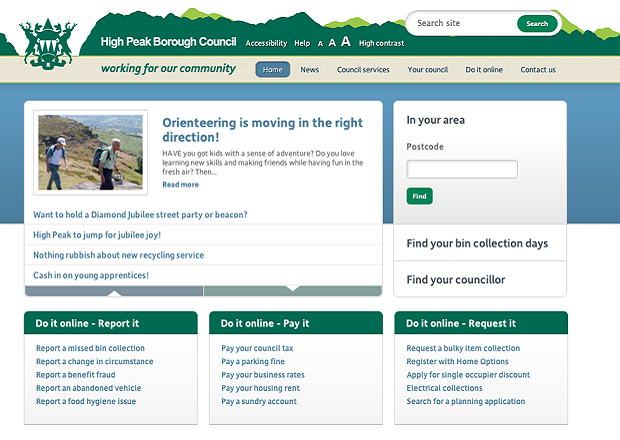 Support for Drupal 7 is ending on 5 January 2025—it’s time to migrate to Drupal 10! Learn about the many benefits of Drupal 10 and find migration tools in our resource center.
Support for Drupal 7 is ending on 5 January 2025—it’s time to migrate to Drupal 10! Learn about the many benefits of Drupal 10 and find migration tools in our resource center.High Peak Borough Council and Staffordshire Moorlands District Council were delivering a shared services strategy. As part of this they were looking to replace disparate separate content management systems with a consolidated central platform that let them re-use content across the authorities where it made sense. The aims were to reduce complexity, cost, administration overhead.

Drupal was chosen for its ability to model the authorities data structure, deal with the data volumes required, and provide flexibility in sharing content across domains.
In 2007, Staffordshire Moorlands District Council and High Peak Borough Council developed a joint transformation programme to share services, leverage technology, and promote best practices across the two organisations in order to reduce costs and improve efficiencies. This programme included their public websites, which both authorities use to provide information on recycling, housing, licensing and other council services for local residents.
Each authority needed a distinct identity within any shared solution, which also must:
- Promote modal shift and increase online transactions
- Ensure users can find information easily
- Generate efficiency savings in site and content administration
- Maximise user satisfaction
The outcome of the project was successful and was completed on time and within budget, delivering:
- 90,000 property references loaded onto both sites allowing each property postcode search to show refuse collection schedules, council tax bands, councillor and electoral details
- In excess of 1,300 council meetings added for both site – including 12,000 individual meeting documents uploaded for both sites
- 30 site editors actively managing content over both sites
- Over 20 transactional forms including payment of Council tax, reporting of missed bin collection and bulky item collection
- Average page load times of less than 2 seconds
- Integration with Twitter and Facebook
Technical specifications
The site makes heavy use of the Domain Access, and Domain Theme modules to provide multiple sites on top of a single shared content repository. Content is published to one, or both of the available domains depending on business needs.
The site also makes heavy use of the Location suite of modules to provide location based services such as “Where’s my nearest” functionality for finding various council managed services such as leisure centres, allotments, and community centres.
The sites feature over 150,000 nodes, including details of properties that the authorities are responsible for and details of council meetings, and minutes.
The domain module allowed the authorities to choose how content was managed across the two sites, allowing re-use without any duplication of effort or ownership, this was a key aim of the project.
Modules such as Location and GMap allow the site to present relevant local information to citizens, and help the authorities with their channel-shift goals to provide the information that people need easily online. The bulk data that the authority has is managed using the Feeds module to integrate data from other business systems into Drupal, including electoral information, refuse collection data, property and planning data.
The site uses Apache Solr integration to power the site search to allow more flexibility than Drupal’s built in search features.
Hydrant - Hydrant are an award winning UK digital agency and experienced Drupal developers since 2007, based in Cumbria and Oxford.